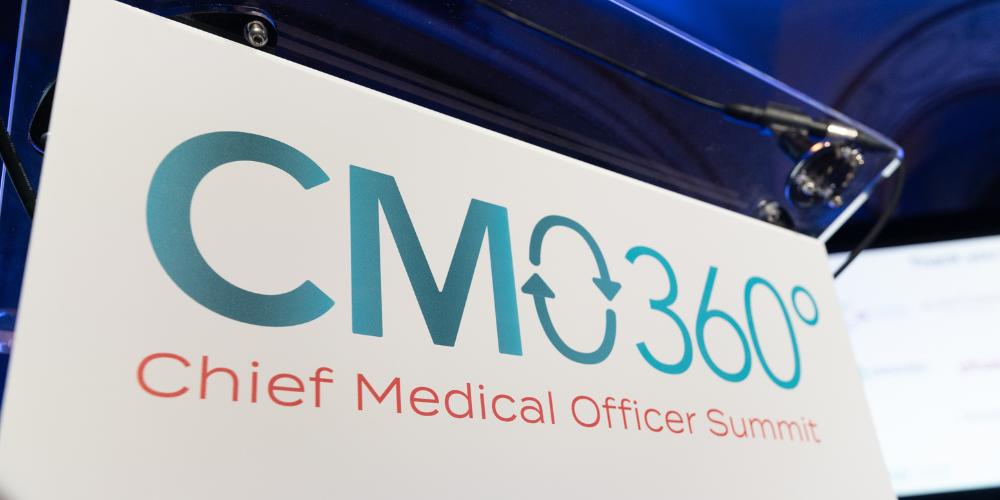Transitioning to the New EU Clinical Trials Regulation
Agios Pharmaceuticals Head of Biometrics and Regulatory Affairs, Margarida Geraldes, PhD, discusses their adoption of the EU Clinical Trials Regulation (CTR), how to transition to the new regulation effectively and how CMOs can best partner with their regulatory colleagues.

What is EU CTR?
The CTR came into effect in the EU on January 31st, 2023, to replace the EU Clinical Trials Directive (CTD) with a goal of harmonizing the submission and review of clinical trials in the EU and increasing transparency. As of January 31st, 2023 all new clinical trials had to be submitted as part of these new regulations and all trials that have already been initiated need to transition to the EU CTR by January 31st, 2025. At Agios, we decided that it would be a good idea to be an early adopter of the new regulation to work through/learn the new regulation and associated processes, before it was mandatory. As such we submitted our first Clinical Trial Application (CTA) for a new trial before the January 31st, 2023 deadline. We understood that, as a new regulation, even the regulators hadn’t worked through all the possible challenges and so there were bound to be bumps in the road. It was definitely the right strategy as we had lots of learnings that we are now able to implement for future trials in EU CTR and for transitioning ongoing trials.
What are the differences between EU CTR and CTD?
The EU CTR is a mechanism for the EU to implement its vision of centralizing their processes to foster clinical trial innovation and transparency.
• Prior to EU CTR, Sponsors had to submit CTAs for their protocols separately to National Competent Authorities and Ethics Committees in each country to gain regulatory approval to run a clinical trial. You can imagine if we are running a large trial or a rare disease trial where we need a lot of sites in different countries to accrue patients, submitting several separate applications and then responding to their questions about our applications and getting approval can be resource and time consuming. With EU CTR, we are submitting one application and getting one consolidated list of questions, coordinated by a reference member state. The timeline to respond to questions is also accelerated so we have 12 calendar days to answer those questions.
• The other part of EU CTR is that there are more stringent guidelines regarding transparency and disclosure. Clinical trial protocols and results must be published so that the public has access within specific timelines. Prior to EU CTR, posting of the results was a separate process. With EU CTR, and its backbone of a new Clinical Trials Information System which includes a public searchable database, documents that will be made public and require redactions (of Commercially Confidential Information (CCI) and Personal Data) need to be redacted and submitted upfront. This does entail additional effort from Sponsors upfront.
These are two of the main differences between the EU CTD and the new EU CTR.
“Companies need to take on the role of educator about the content of their submissions and the content of their protocols.”
How can companies better prepare to run trials with EU CTR?
First is to carefully consider the development of the documents to minimize the amount of information that needs to be redacted. When EU CTR started, we had options to redact or defer different parts of the documentation. The redaction process can be very time consuming, and the EU has expressed dissatisfaction with the current amount of redactions some companies propose. This can derail a submission because if the application is rejected over this, we need to go back to the beginning of the process. To preempt this, companies should carefully consider the development of the documents to minimize the amount of personal data and CCI that is included and will eventually need to be redacted.
The other important part is to consider the choice of the reporting member state. Within EU CTR, the reporting member state evaluates the application and prepares the report on behalf of all other member states. It makes sense to try to select a member that can oversee several of the clinical trials and become more familiar with the drug, which can lead to less questions during the requests for information.
Companies should keep in mind that to fully transition by the deadline of January 31st, 2025, the transition (submission) needs to be made about six months earlier – by around July or August – so that there is enough time to work through the approval process as the deadline is for the approval, not for the submission.
What makes the transition process difficult and time consuming?
When you have everything set up in a certain system, transitioning to a new system can be time consuming. Also, it is a relatively new regulation so not all aspects have been addressed. One thing that the EU is doing really well is updating Q&A documents related to EU CTR for companies to consult regarding different parts of the regulation, practical aspects and other high level questions.
“While regulators come at things from their specific standpoint, many times companies have a good justification for what they are doing and need to take the time to clearly articulate it and defend it.”
How can companies better work with regulators on both new regulations and novel approaches to drug development?
Regarding regulations and guidance, regulators like the FDA release guidance as drafts and provide a public consultation period where companies can submit their recommendations for changes with an appropriate rationale.
When it comes to educating regulators, we need to appreciate that no one in the world can possibly be an expert on every possible therapeutic area and drug. Regulators will have their own particular areas of expertise but when something novel is developed, there are no experts. That is where companies need to take on the role of educator about the content of their submissions and the content of their protocols, and we need to leverage the processes that already exist to do so.
For example, in EU CTR, when we get the part one questions about the scientific and drug documentation, they ask questions from their perspectives as regulators. That is an opportunity for us to answer those questions and educate them on how we are thinking about whatever they are challenging us about. Additionally, in the EU we also have a special protocol assessment where we have the opportunity to engage with the EMA and gather specific feedback on our protocol and agree upon how to conduct the trial. This is another opportunity to collaborate with and educate regulators. These mechanisms exist and it is up to companies to leverage them.
There is also a strategy that goes into these discussions, like determining how much upfront communications and interactions we are going to have versus things that we will handle after the clinical trial results are available.
Another related point is that when we conduct clinical trials in both the US and EU, we are working with the FDA and EMA, which are two of the more stringent health authorities broadly. It isn’t unusual that they will have different viewpoints from one another even on the same clinical trial protocol. Even if we are trying to be accommodating, it can be challenging or at times impossible to address their opposing viewpoints. It all comes down to collaboration between the CMO, the regulatory team and the clinical team to decide what regulatory risks to take and what changes to make and how to present arguments and rationale to regulators.
“Creating an environment where we can challenge each other sets us up to succeed because we will then be more likely to anticipate and, at times, proactively address potential challenges from regulators.”
What common mistakes do companies make when it comes to regulatory strategy?
One mistake I see is when companies are too risk averse. By that I mean that they implement regulator feedback exactly beyond their better judgment. While regulators come at things from their specific standpoint, many times companies have a good justification for what they are doing and need to take the time to clearly articulate it and defend it. Sometimes companies are so risk averse that they don’t push back on conservative regulatory strategies or don’t pursue novel regulatory pathways. Or sometimes they make sure that when they submit their protocol, everything comes back approved by regulators. That is not actually a good thing. If regulators agree with every aspect, it may mean we haven’t pursued something novel that could ultimately lead to faster approvals to get good drugs to patients faster.
On the other hand, you see companies who continue to argue and push back on requests for critical changes requested by FDA or EMA to the point where it comes off as tone deaf and can damage the companies’ relationships with and trust from regulators.
How can CMOs best partner with their regulatory colleagues?
It is very important for CMOs and their regulatory teams to be able to challenge one another. A pure hierarchy doesn’t work because we all come at these issues from different perspectives. Even amongst regulators there are different functional expertises represented. Creating an environment where we can challenge each other sets us up to succeed because we will then be more likely to anticipate and, at times, proactively address potential challenges from regulators.









